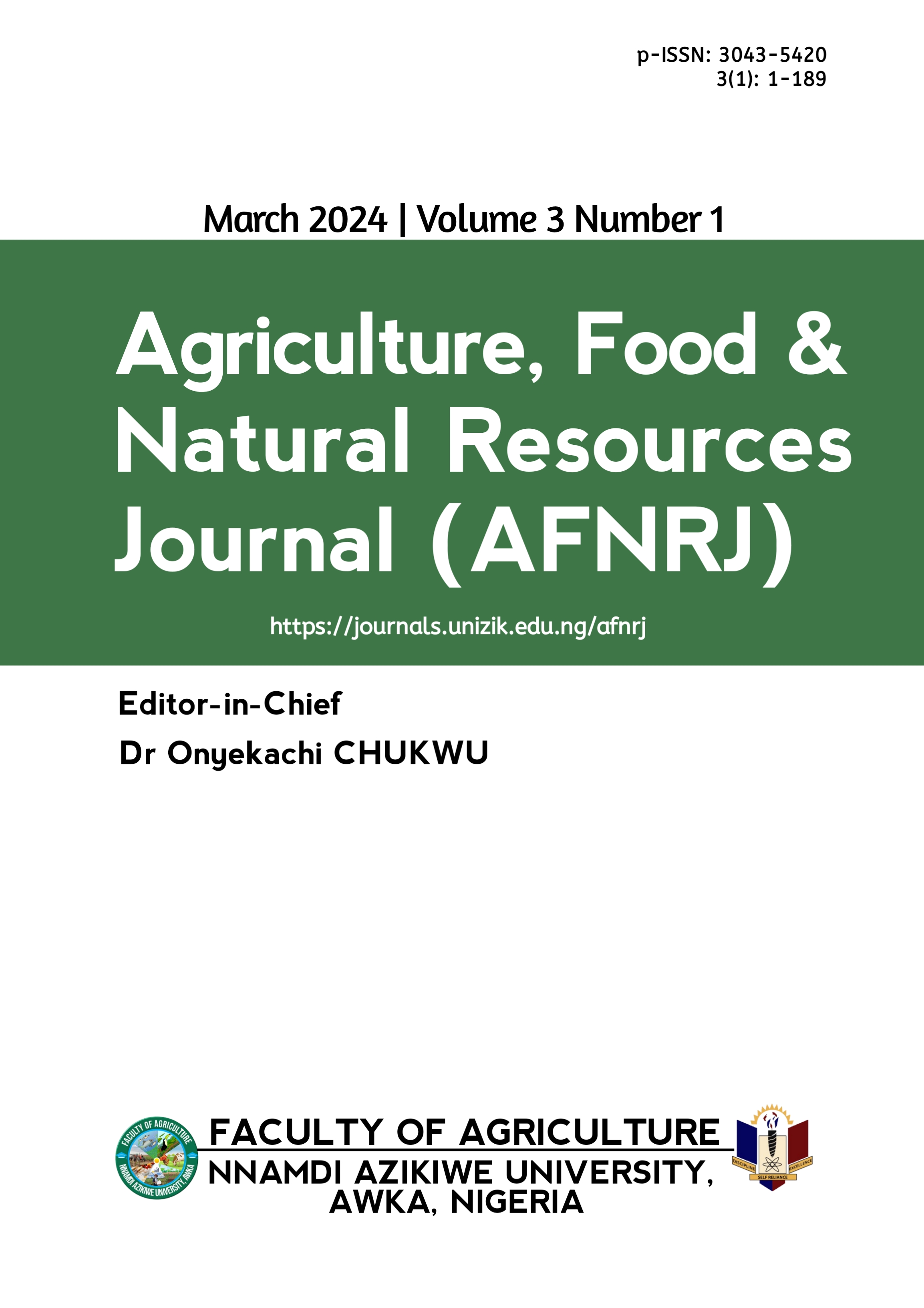Evaluation of briquettes produced from extractive-free residues of hardwood species using Gum-Arabic as binder
DOI:
https://doi.org/10.5281/zenodo.13769524Keywords:
Physico-mechanical, binder level, sawdust, calorific value, characterizationAbstract
This study was undertaken to determine some physico-mechanical and combustion properties of briquettes produced from extractive-free wood of Sterculia tragacantha, Anthocleista vogelii, and Trichilia spp. The extractive was removed from the residue using the hot-water method. Gum-arabic was used as a binding agent, it was mixed in 100 ml of water to form gelatin. Sawdust of 50g was blended with gum-arabic binder (5, 10, and 15g for gum arabic) and was hand-fed into the briquetting mould. Briquettes were produced at a pressure of 10.4 kg/cm² and samples were replicated 4 times. The briquettes were labelled as Sterculia Briquette (SB), Anthocleista briquette (AB), and Trichilia briquette (TB). The weight, length, and thickness of each briquettes were recorded before drying. The data collected were subjected to statistical analysis (ANOVA at p<0.05). The physico-mechanical properties of extractive-free wood briquettes in all the species increased with an increase in binder level. They gave the highest value at 15g binder level. Their values ranged from 0.67 to 0.89g/cm3 for density, 71.55 to 99.91% for shatter index and 11.16 to 29.34N/mm2 for compressive strength. However, combustion properties of the briquette show that ash content increased with an increase in binder level and ranged from 2.12 to 5.75%, while calorific value decreased with an increase in binder level with a range of values from 32.51 to 33.40 MJ/kg1. Anthocleista briquette performed best at 15 g binder level in physico-mechanical properties, while Trichilia briquette at the lowest binder level (5 g) is preferable in terms of combustion properties. Removal of extractive was observed to improve the calorific value of the briquette.
Downloads
Published
Issue
Section
License
Copyright (c) 2024 Author

This work is licensed under a Creative Commons Attribution 4.0 International License.
which permits unrestricted use, distribution, and reproduction in any medium, provided the original author and source are credited.
Authors retain the copyright of their published work in the AFNRJ.





